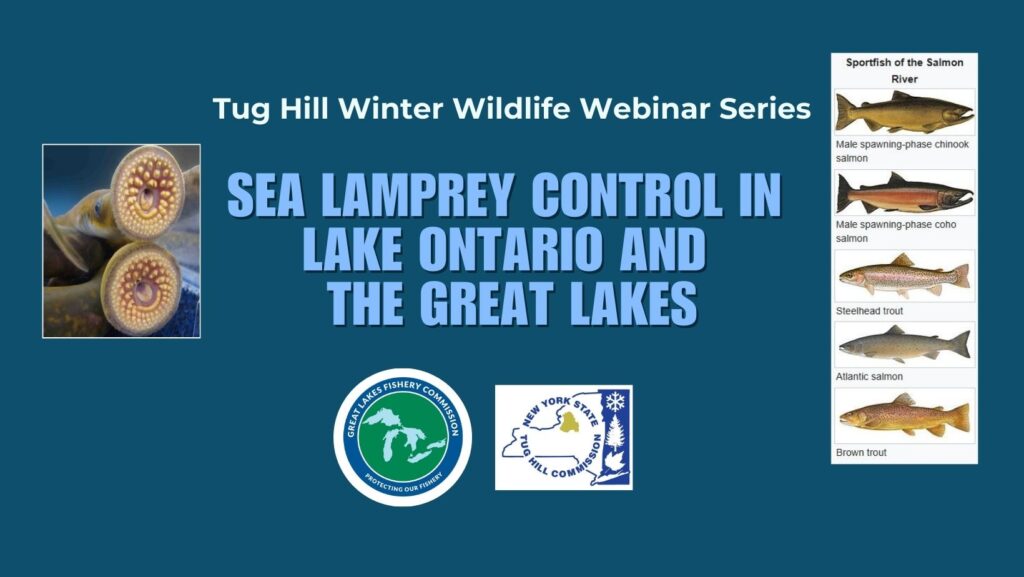
Part 1: Sea Lamprey Control in Lake Ontario and the Great Lakes
Join the Great Lakes Fishery Commission (GLFC) for a webinar on efforts to protect the health of the Great Lakes from the continuous threat of invasive, parasitic sea lampreys. Native to the Atlantic Ocean, these invaders harm the Eastern Lake Ontario fishery by parasitizing species like Steelhead, Brown Trout, Salmon, Lake Sturgeon, walleye, and many other species. Sea lampreys attach to fish with their suction cup mouth, and feed on their bodily fluids. Introduced to Lake Ontario in the early 1800’s, Sea Lamprey caused a dramatic collapse in the fishery until Sea Lamprey control programs were developed. Come learn about treatments in the Tug Hill region, including lampricide applications in tributaries like Orwell Brook and Black Creek, and sea lamprey barriers to block migration. Discover the science behind these efforts and the impact of unchecked sea lamprey populations on local ecosystems and fisheries like those of Eastern Lake Ontario and the Salmon River. Don’t miss this chance to explore solutions for protecting the Great Lakes fishery!
Speaker
Ted Treska is the Sea Lamprey Control Program Manager at the Great Lakes Fishery Commission. According to the GLFC “Under the Convention on Great Lakes Fisheries, the commission is responsible for developing and implementing sea lamprey control, which began in 1957, to drive down populations of the noxious, invasive pest that kills more than one hundred millions pounds of valuable fish if left uncontrolled. Sea lamprey control has been a phenomenal success. In most areas of the Great Lakes, populations have been reduced by 90%. Without sea lamprey control, the $7 billion fishery as we know it would not exist.”
Time and Date
Tuesday January 21st at 6PM
How to Register
Registration is required and available at tinyurl.com/TugHillWildlife. A Zoom link will be sent along with your registration confirmation email. We encourage you to share this exciting opportunity, and the attached flyer, with your network!
The Webinar Recordings for last year’s four-part winter wildlife webinar series are available at https://tughill.org/services/training/
Future webinars in this series will tentatively be featuring American Chestnut Research and Restoration, and White Nose Syndrome – the Status of NY Bat Populations.